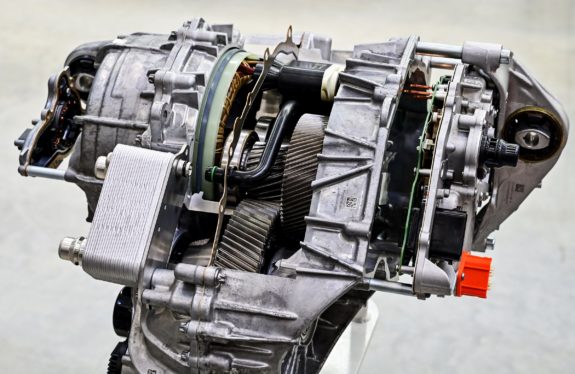
Enlarge / A 158 kW electric motor for the front-wheel drive of a Tesla Model Y. (credit: Patrick Pluel/Getty Images)
Last month, at a livestreamed Tesla investor event that went short on new cars and long on grandiose narratives, a minor detail in Elon Musk’s “Master Plan Part 3” made big news in an obscure corner of physics. Colin Campbell, an executive in Tesla’s powertrain division, announced that his team was expunging rare-earth magnets from its motors, citing supply chain concerns and the toxicity of producing them.
To emphasize the point, Campbell clicked between a pair of slides referring to three mystery materials, helpfully labeled Rare Earths 1, 2, and 3. On the first slide, representing Tesla’s present, the amounts range from a half kilo to 10 grams. On the next—the Tesla of an unspecified future date—all were set to zero.
To magneticians, folks who study the uncanny forces some materials exert thanks to the movements of electrons and sometimes use cryptic hand gestures, the identity of Rare Earth 1 was obvious: neodymium. When added to more familiar elements, like iron and boron, the metal can help create a powerful, always-on magnetic field. But few materials have this quality. And even fewer generate a field that is strong enough to move a 4,500-pound Tesla—and lots of other things, from industrial robots to fighter jets. If Tesla planned to eliminate neodymium and other rare earths from its motors, what sort of magnets would it use instead?
Read 19 remaining paragraphs | Comments





